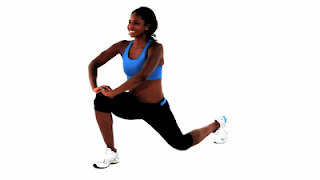When tight, overworked or just plain exhausted, the psoas muscle can cause many complications.
Directly:
- Sore or painful low back
- Back pain that hinders your daily activity
- Deep low abdominal pain
- Pain when trying to stand after sitting for a while
- Not being able to stand up straight
- Tightness straight across the belt line of your low back
- Piriformis Syndrome
- Knee Pain
- Heartburn
- Leg Length discrepancies (shortened leg)
- Rotation of the pelvis (making it hard to stay in alignment)
- Excessively tight hamstrings
- Tight calf muscles
- Soreness on the balls of the feet
- Plantar fasciitis
After an abdominal surgery, whether it be from C-Section, Hernia surgery, or women that are dealing with endomitriosis, scar tissue develops where there was an incision. The way that scar tissue works, it adheres much like glue to create more strength around the area of surgery. With nearly every person that I have seen here in the office that has had some form of abdominal surgery, the scar tissue development glues to the deep hip flexors (muscles diagrammed above).
In order to keep those muscles loose and mobile, there are a few things you can do.
- Stretch
- Trigger Point work
- Orthopedic Massage
Most often times, when someone is having an issue with the deep hip flexors, their hamstrings are so tight, they can't seem to get them stretched out or loosened up, no matter how much work they do with them.
It may sound backwards, but in regards to low back pain and psoas issues. If you stretch your hip flexors first, then stretch your hamstrings, you'll get greater results and your hamstrings won't pull as much.
STRETCHES
- Lunge
- Back knee down on the ground, front knee at 90 degrees
- Back knee straight, both feet straight forward, front knee at 90 degrees
- Back knee straight, back foot rotated at 45 degrees to the outside, front foot straight, front knee at 90 degrees
- On any of the lunge stretches, make sure you are keeping your torso vertical
- If you want to deepen the stretch, raise your arm up in the air on the same side that the leg is extended back, this you should feel pull from your leg, all the way up under your rib cage.
This is a very quick and simple solution to overcoming low back pain that is associated with the deep hip flexors, predominantly the psoas muscles.
Make sure you do one or all of these stretches BEFORE stretching out your hamstrings.
If you're on a run (especially if it's a hilly course) and you feel your hamstrings start to tighten up, stop for 10-20 seconds do a lunge/psoas stretch, then continue your run. You'll be amazed at the difference stretching out these deep muscles can make when incorporating them into your daily routine.
As always, if you need a little extra help, deep hip flexors are some of my favorite muscles to work on due in large part by the fact that the can ease pain so quickly with some of the simplest techniques.
Please let me know if you have any questions or if you would like me to cover a specific topic in the coming weeks.
Have a healthy month of February and great pain free training my friends!
~Cindy






I'm on it! Thanks Cindi! So good to see you today!!
ReplyDelete#1 muscle that eliminates joint and back pain, anxiety and looking fat
DeleteI bet you can’t guess which muscle in your body is the #1 muscle that eliminates joint and back pain, anxiety and looking fat.
This “hidden survival muscle” in your body will boost your energy levels, immune system, sexual function, strength and athletic performance when unlocked.
If this “hidden” most powerful primal muscle is healthy, we are healthy.
Is it…
a) Abs
b) Chest
c) Glutes
d) Hip Flexors
Take the quiz above and see if you got the correct answer!
Sign Off
P.S. Make sure you check out the next page to get to know the 10 simple moves that will bring vitality back into your life!
==> Click here to discover which “hidden survival muscle” will help you boost your energy levels, immune system, sexual function, strength and athletic performance permanently!
.